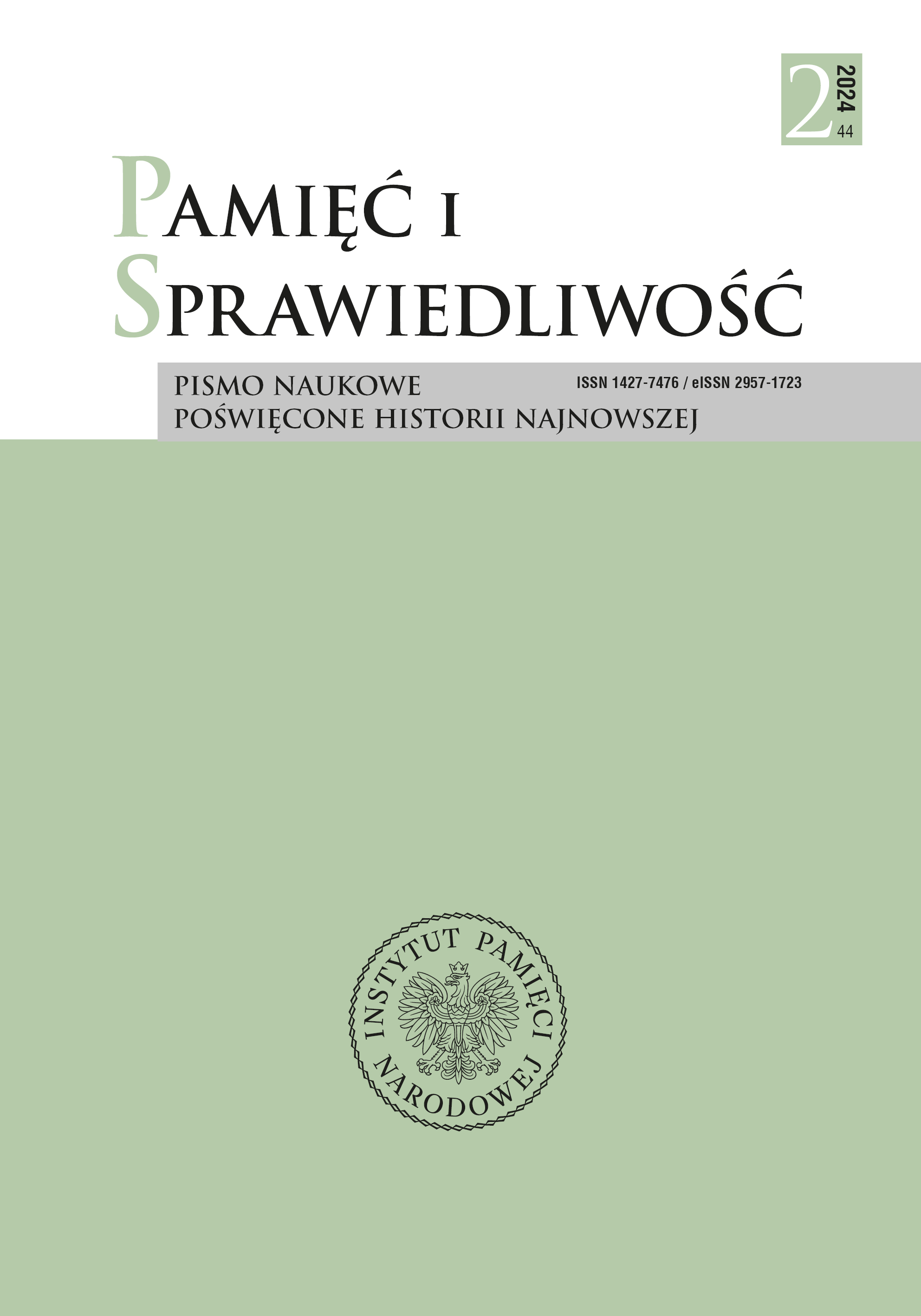Vol. 44 No. 2 (2024)
Tematem przewodnim „Pamięci i Sprawiedliwości” nr 44 jest osoba i twórczość Sergiusza Piaseckiego. Uczestnik wojny polsko-bolszewickiej, agent wywiadu, kryminalista i więzień, następnie poczytny pisarz, żołnierz wojny i konspiracji lat 1939–1945, repatriant, a wreszcie emigrant polityczny – był on jedną z najbarwniejszych postaci wśród polskich literatów XX w. Koleje jego życia przypomniał Tomasz Balbus w eseju otwierającym numer. Wacław Lewandowski scharakteryzował powieść Siedem pigułek Lucyfera (druk 1948), a Mirosław Golon wskazał na wartość tego utworu jako źródła do dziejów początków reżimu komunistycznego w Polsce. Następnie Krzysztof Polechoński podkreślił, że mimo postępów badań, wiele elementów życiorysu omawianego pisarza, jak data urodzenia, stan cywilny czy szczegóły pobytu w więzieniu, nie zostało do końca poznanych przez naukowców. W kolejnym studium Ryszard Oleszkowicz przypomniał dzieje jednostki polskiego wywiady wojskowego, w której Piasecki służył w latach 1921–1924. Adam Fitas porównał życiorysy, poglądy i twórczość bohatera numeru i Józefa Mackiewicza. Obaj pisarze pochodzili z polskich Kresów Północno-Wschodnich, przeżyli wojny w latach 1918–1920 i 1939–1945, a następnie zostali emigrantami politycznymi. Hans-Christian Trepte, pisząc o recepcji twórczości Piaseckiego w krajach języka niemieckiego wskazał że pisarz ten, choć należący do najpopularniejszych na omawianym obszarze, pozostaje nieobecny w tamtejszych badaniach literaturoznawczych. Dział Varia otwiera praca Alicji Bartnickiej, poświęcona obowiązkowi noszenia opasek z gwiazdą Dawida przez Żydów w Warszawie w latach 1940–1943. Według autorki – wbrew opinii części badaczy – Niemcy nie skazywali za brak opaski na karę śmierci. Beata Kozaczyńska omówiła próby radzenia sobie przez więźniów z realiami pobytu w obozie przejściowym w Zamościu: rozdzielaniem rodzin, bardzo złymi warunkami zakwaterowania części osób, głodem, brakiem opieki medycznej, brakiem sztućców i talerzy oraz mnogością insektów. Krzysztof Lesiakowski przypominał postać Wiktora Pietruszki – urzędnika poszukującego po II wojnie światowej dzieci polskich, wywiezionych do Niemiec w celu germanizacji, który postulował wykorzystanie w tych poszukiwaniach m.in. dokumentów z czasów okupacji oraz analizy danych statystycznych. Paweł Niziołek przedstawił próby przekształcenia środowiska akademickiego w Polsce przez władze komunistyczne poprzez preferowanie naboru na studia wyższe młodzieży z rodzin robotniczych i chłopskich. Wbrew oczekiwaniom władz okazało się, że młodzież ta nie była nośnikiem idei komunistycznych. Miroslav Jireček przedstawił zmiany organizacyjne i programowe w szkolnictwie czechosłowackim w latach 1948–1989. Numer zamykają recenzja Jana Piskurewicza z książki o polskich miejscach pamięci na Grodzieńszczyźnie oraz omówienie konferencji naukowej poświęconej nierozliczonym zbrodniom z okresu Powstania Warszawskiego, autorstwa Elżbiety Kowalczyk i Patryka Pleskota.
 Język Polski
Język Polski
 English
English
 Deutsch
Deutsch
 Français (France)
Français (France)
 Italiano
Italiano
 Русский
Русский


 PDF (Język Polski)
PDF (Język Polski)

